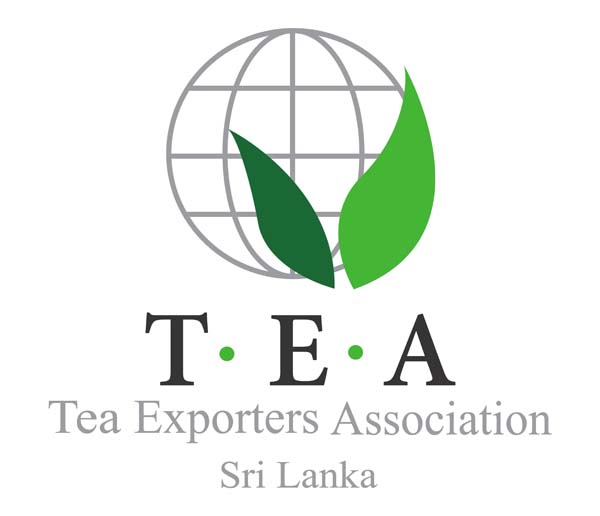
What ails the Sri Lanka Tea Industry?
With regards to the current crisis facing the tea industry in Sri Lanka, the Tea Exporters Association released the following article on what ails this industry.
What ails the Sri Lanka Tea Industry?
- Recognition of the different industries under tea – There are two different sectors in the Tea Industry, the Plantation/Growers sector and the Tea Export sector. Failure to recognize the difference in these industries is the inherent problem. For political reasons the government high ups require both these sectors to come up with a unified solution. The plantation sector is highly politicized and approx.70% of the tea production is controlled by the smallholder farmers, depend on heavy subsidies in replanting, fertilizer and price guarantees. The government policy on the industry is primarily decided on the pacification of this sector and all others are victims of unrealistic policies in a world driven by market economy based on supply and demand.
- Social Economy versus Business Economy – The tea export sector is driven by the private establishments without any handouts or subsidies from the government coffers and pay heavy taxes in terms of cess, levies, service charges and the revenue based income to the IRD. This makes Tea exports one of the heaviest taxed export commodities in the world.
- Reducing tea crop and price escalation – The Sri Lanka tea crop is climate dependent and has been fluctuating between 290 to 340 million kgs per annum. During the drought, this may even drop to 280 million kgs. With restrictions on the importation of orthodox teas, the drop in crop and increase in auction prices leave room for large scale malpractices. This is why we are now seeing exceptionally large volumes of tea not fit for human consumption being detected by the customs. These detections are merely a small percentage of the actual sub-standard volumes exported from Sri Lanka under “Pure Ceylon Tea.” The genuine exporters who have requested the tea trade to be liberalized are the ultimate victims of the illicit trade and are forced to relocate their processing plants in countries with more liberal policies. Dubai is fast becoming a threat to Sri Lanka as a Tea Export Hub and may surpass Sri Lanka within a short period. Several other Free Trade ports are inviting Sri Lankan Tea companies to set up operations.
- Tea is Globallyrecognized – Tea is a well-known commodity in the global market with an annual consumption of about 7 billion kgs. Out of this, around 1.8 billion kgs are exported from producer countries and global tea Hubs. Sri Lanka, which enjoyed a 23% of the Global tea export trade 15 years ago, has seen a gradual decrease year on year and currently accounts for about 17%. If this trend is not reversed, Sri Lanka will lose its importance in the Global tea market, whilst the consumers will have many options to enjoy tea.
- Protectionist policies – Protectionist policies of growers backed by governments have contributed to the current debacle in the tea industry and costing the treasury an enormous burden in subsidies.
- 2002 budget – The 2002 Budget proposal to recognize branded tea as an exclusive segment witnessed the tea export revenue climbing from USD 750 million to USD 1.6 billion in 2014. This is now showing a drastic decline as the policies are reversed towards protecting the tea farmer and neglecting the export sector. Further, the political and economic turmoil in our main markets in Middle East and Russia have aggravated the situation.
- Lack of business sense in the plantations – Years of non-productive agricultural policies coupled with government red tape has resulted in negativity in operating large plantations which were privatized with the state retaining the decision making powers. This has made the tea plantations a “single crop business model” when there are so many diversification options available. Plantation Companies too have not been proactive in diversifying into tea tourism, animal husbandry, large scale fruit and vegetable cultivation, other tree crops with commercial values and cultivated timber industries, new technologies in water management, Water harvesting, irrigation, alternate power generation and so many other projects too numerous to mention.
- COP matrix – The tea plantation industry should be run as a business model and meet competition from global players as opposed to government protection to cover up inefficiencies. The Sri Lankan tea plantation industry is the most expensive in terms of labour input,representing an unprecedented 70% of the cost of production, whereas the world average for other tea producing countries is about 23%. The cost matrix is most important for any commodity to have a competitive edge. Failure to understand this important equation has created a downward trend in operational profits.
- Promotion and Marketing fund – The P&M fund was initiated to fill the vacuum created by transferring of collection of tea cess from the Sri Lanka Tea Board(SLTB) to the Treasury and as a result the SLTB was unable to carry out any global promotions due to a lack of funds. As agreed by the Tea Exporters, Rs 3.50 per kg was credited to this fund at the time of exporting tea for the sole purpose of P&M in the global markets to regain the lost share for Ceylon Tea. This fund is a privately contributed equity and the effort made by the government to take it over on the premise of it being categorized as an industry fund is illegal and beats the purpose of its existence. The delay in launching the global tea campaign is no fault of the Tea Exporters but due to state bureaucracy and red tape on the part of the authorities.
10. Improvement in quality of Ceylon Tea – Due to the comfort of the protection net offered by the state to the tea smallholders, the quality of tea produced has fallen far below desired levels. The quality standard applied by the Tea Board to qualify for the Lion logo is the accepted norm for Pure Ceylon Tea of superior standard. It is unfortunate that no more that 30% of the manufactured teas qualify for the Lion logo in the current context.
11. Electronic auction system – The traditional system of auctioning tea is continuing at the Colombo auction, though the situations have changed vastly. To purchase tea a Company has to deploy 3 to 4 tea buyers operating in three auction rooms over two days. In modern parlance this is a criminal waste of executive time. Some of the traditional tea auction centers have moved on to screen based auctioning with the ease of procuring the tea requirements from the comfort of their offices and vastly reducing waiting time and executive deployment. It is high time the Colombo Tea Auction move forward to new technology to reduce procurement time, avoid malpractices at the auction gathering and have a transparent and real time auction mode with data gathering online.
12. Introducing new technology to plantations – Tea plantations need to re-look at the way they plant, nurture, harvest and manufacture tea. There are several models available in developed tea countries such as Japan.
13. Empowering innovation in tea – Tea must harness its true potential for its inherent properties for beverage, pharmaceutical, therapeutic and non-beverage applications.
14. Liberalization of tea imports for value addition and export–The maximum an industry can grow is to its allowed limits. In the case of tea the limitation factors are the declining volumes of tea, declining quality of tea and the exorbitant pricing for even poor quality teas through state intervened controls on imports. For the tea export industry to grow and take a substantial share of the global market these shackle like impediments must be removed.
15. De-regulation of tea exports – Tea is the most controlled export commodity. The current Tea Control Act dates back to 1957. Due to controls, malpractices are also at an increased level. The tea export industry should be a self-regulated export industry with suitable safeguards to protect Lion logo standard quality tea.
16. Converting the tea export sector from a traditional export commodity to a thrust industry – From the inception, tea exports have been classified as a traditional export and denied all facilities and incentives offered to other industries. This must change and make the tea export industry a thrust industry and offer incentives and encouragement that other industries enjoy.


